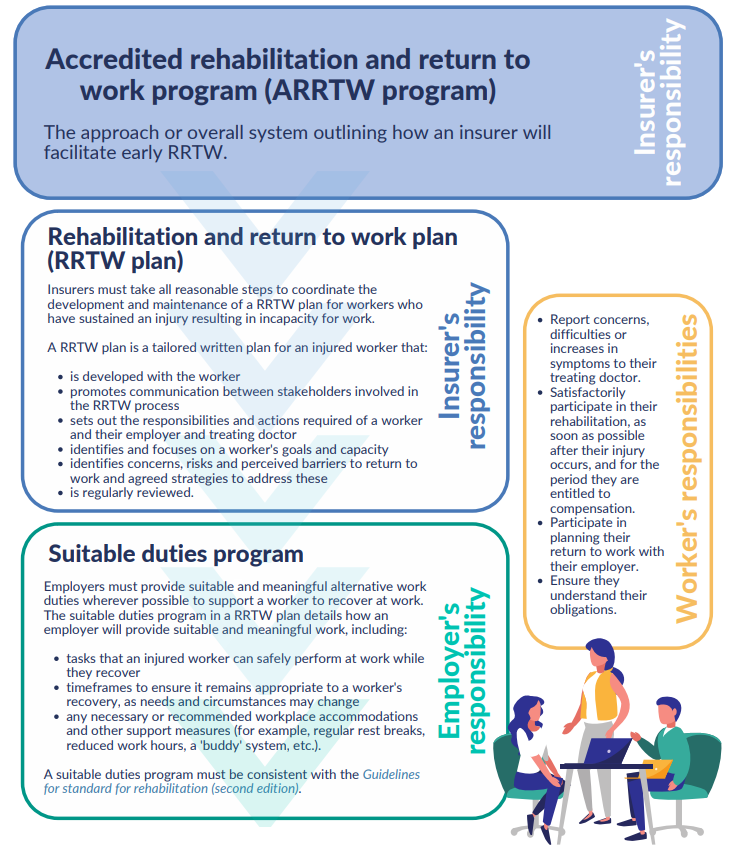Understand your rehabilitation and return to work responsibilities
Learn more about your responsibilities as an employer for rehabilitation and return to work, and how these interact with your insurer and workers’ responsibilities.
Best practice
You understand your responsibilities as an employer for rehabilitation and return to work, and how these interact with your insurer and workers’ responsibilities.
Why this is important
Evidence shows that when all parties to a worker’s compensation claim work towards a shared goal, a successful return to work is more likely.
By working together, you can minimise delays in decision making and reduce the risks that a worker will take longer to recover, have worse return to work outcomes and the likelihood of litigation (PDF, 2.39 MB).
Your toolkit
Check out new the new rehabilitation and return to work guideline for insurers for useful information about insurer, employer and worker responsibilities for RRTW planning and how these interact, the important role that treating health providers play, and why working together achieves positive outcomes for injured workers.
- Adopt an evidence informed person-centred approach to improving return to work outcomes for injured workers by:
- providing workers opportunities to recover at work
- offering organisational support to supervisors and line managers so they can confidently handle concerns raised and keep rehabilitation on track
- communicating with the workers’ treating team, and provide information on role demands and available alternative duties
- working collaboratively with an injured worker, your insurer, and treating health providers to develop and implement a worker’s individual rehabilitation and return to work plan (PDF, 0.9 MB).
- Read more about the claims process and your obligations as an employer:
- Know what to do if an injury or illness occurs and share what to expect as part of the claim process with your injured worker.
- Read our e-bulletin on how understanding the claims process helps you and your workers.
- Understand your legal obligations and role model best practice injury management by following the seven principles set out in the Guidelines for Standard for Rehabilitation.
- Working together is key. Ensure all stakeholders involved in rehabilitation and return to work, including workers and supervisors, understand their roles.
